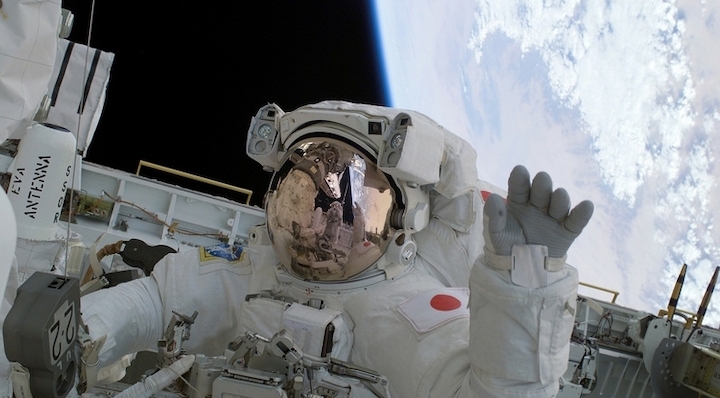9.05.2019
The Center for Applied NanoBioscience and Medicine will integrate its health platform in the company's automated CubeLab system to develop an easy way to test astronauts' health in space.

Researchers at the University of Arizona College of Medicine – Phoenix are partnering with Space Tango, a private aerospace company that designs, builds and operates facilities on the International Space Station, to develop an easy way to test astronauts' health in space.
Led by Frederic Zenhausern, director of the UA Center for Applied NanoBioscience and Medicine, the project has received three independent NASA grants. The latest funding will allow researchers to develop a diagnostic tool – a miniature syringe-like device that can detect bioagents and hundreds of biomarkers in blood or saliva – and test it in space.
"This is the next step in the evolution of this technology toward use on a test flight," Zenhausern said, referring to the "vertical-flow" device, a novel technology patented and licensed by Tech Launch Arizona, which helps bring UA innovations to the world through commercial pathways.
Center researcher Jian Gu, an associate professor in the college's basic medical sciences department, will work with the Kentucky-based company to integrate the diagnostic platform into Space Tango's automated hardware.
Jana Stoudemire, director of commercial innovation at Space Tango, said the company is pleased to partner with the research team at the UA College of Medicine – Phoenix. The device will be part of a payload housed in one of its autonomous CubeLabs that can provide near real-time data and monitoring in microgravity.
"Everything in the CubeLab has to be extremely well-designed and simple to use in the contained environment of a space mission and the International Space Station," she said.
The basic questions researchers have to answer are: How do you take a blood or saliva sample in microgravity and how is it processed by an astronaut en route to Mars?
Zenhausern said in the center's first NASA grant, the chemistry of the device was tested for protein markers. Its application to nucleic acid detection was demonstrated under a second NASA Human Research Program grant, led by center researcher Jerome Lacombe, an assistant professor in the medical school's basic medical sciences department.
This latest grant – $100,000 from NASA and its Translational Research Institute for Space Health – will pursue with Space Tango development of the diagnostic test using a human factor engineering approach to validate its performance in microgravity.
"What is exciting is that NASA is investing more funds in space exploration and is considering human health as its first priority to succeed in long-duration missions," Zenhausern said. "Until now, very little monitoring of the health of astronauts has occurred, but deep space travel will require cutting-edge technologies for astronaut health and performance."
Recent news about the health of U.S. astronaut Scott Kelly, who spent a year at the International Space Station in the confines of microgravity, has questioned the promise for long-term human space travel. Other reports earlier this year that space flight could activate dormant viruses like shingles, chickenpox and herpes heighten the importance of developing ways to monitor and treat health conditions of astronauts in space.
Leroy Chiao, a former NASA astronaut, International Space Station commander and ANBM consultant, said he was not surprised by the March report.
"We know that under stress, certain genes can turn on and off," he said. "Your body in space is under stress, so it makes sense that the stress can cause some genes to turn on and others to turn off."
Chiao said one of the major concerns of many astronauts is how their bodies will react to exposure to radiation. He said he is impressed with the center's most recent project and its portfolio of technologies for radiation countermeasures. "If this takes us one step closer to learning more about radiation resistance, that's great," he said.
A version of this article originally appeared on the UA Health Sciences website: https://opa.uahs.arizona.edu/newsroom/news/2019/ua-college-partners-space-tango-test-diagnostic-tool-space
Quelle: University of Arizona

